If you are looking for a healthy alternative to using cornstarch or flour in a recipe, behold the wonders of quick cooking tapioca. Tapioca comes from the starchy roots of the tropical cassava tree, which is also known as the manioc tree. Unlike regular tapioca, which contains large, pearl-like beads, quick cooking tapioca consists of small grains and can tolerate prolonged freezing and cooking.
The Name Game
When wandering through the grocery store aisles, you many notice a vast array of tapioca titles because food companies use a variety of names to refer to the same quick cooking tapioca products. Quick cooking tapioca synonyms include instant tapioca, quick tapioca, instant pearl tapioca, tapioca granules and granulated tapioca. Just make sure to avoid tapioca products whose names include tapioca pearls and tapioca starch, as these names indicate different preparations of tapioca.
Think "Thickener"
Quick cooking tapioca is a popular food item for thickening puddings, gravies, stews, soups and sauces. Its popularity as a thickener derives from the fact that it does not contribute fat to the foods that cooks use the quick cooking tapioca in. This makes the tapioca a healthier thickening alternative to cornstarch and flour. In addition, quick cooking tapioca does not have a strong flavor, which means it can thicken foods including soups and sauces without disrupting the existing flavors of those foods.
Pie Possibilities
Pies are a dessert staple in the United States, especially fruit pies of apple and cherry. However, many mothers may have concerns about serving these sugar-laden pies to their children. Using quick cooking tapioca as a pie filler for favorite fruits can help make pies healthier dessert options. In addition to making fruit pies less runny, quick cooking tapioca will give the fruit fillings an "attractive glossy sheen," according to the The Cook's Thesaurus website. For best results, let quick cooking tapioca sit with the other pie filler ingredients for at least five minutes before baking. This will ensure that the quick cooking tapioca absorbs liquid from the fruit, which enhances flavor while also preventing extra liquid.
Puddings
Please your kids with simple tapioca puddings flavored with either fruit or chocolate. Young kids will enjoy the texture, especially if you call it fish eye pudding.
Substitutions
When replacing cornstarch or flour with quick cooking tapioca, knowing the substitution proportions can help ensure that recipes retain their proper thickness and taste profiles. With cornstarch, the substitution ratio is one to one, which means that you can substitute one teaspoon of cornstarch with one teaspoon of quick cooking tapioca, or one tablespoon of cornstarch with one tablespoon of quick cooking tapioca. With flour, the substitution ratio is two teaspoons of quick cooking tapioca for every one tablespoon of flour.
Tips
The small, glutinous grains inside of quick cooking tapioca do not dissolve, even after prolonged cooking. And while many people enjoy the texture of these grains inside sauces, soups, pies and other foods, for some these grains can be a taste turn-off. A solution for removing the grains is to run the quick cooking tapioca through a blender, food processor or coffee grinder before using it.
Related Articles

Tapioca Flour Vs. Quick Cooking Tapioca
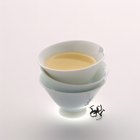
Substitute for Vanilla Custard Powder

Laundry Tips for Play-Doh

Can You Make Dumplings With Corn Starch?

What Is Food Coloring Paste?

Can I Substitute Bleached for ...

What Are the Causes of Pie & Pastry ...
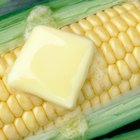
Common Food Emulsifiers
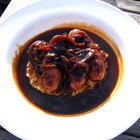
Uses for Wheat Starch

How to Make Natural Pectin From Lemons

Can I Substitute Quick Cooking Tapioca ...
Role of Xanthan Gum in Vegan Baking

Can I Make Boxed Devil's Food Cake Mix ...

Psyllium Husk & Gluten
Arrowroot Starch As Tapioca Flour ...
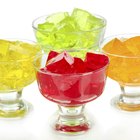
Fat-Free and Sugar-Free Jell-O Pudding ...
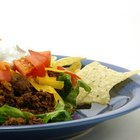
What Can I Use in Place of Sour Cream?
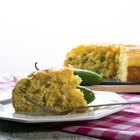
The Purpose of Buttermilk in Baking
How To Make Gluten Free Chicken Pot Pie
Can I Grind Quinoa?
References
Writer Bio
Erik Devaney is a writing professional specializing in health and science topics. His work has been featured on various websites. Devaney attended McGill University, where he earned a Bachelor of Arts in humanistic studies.